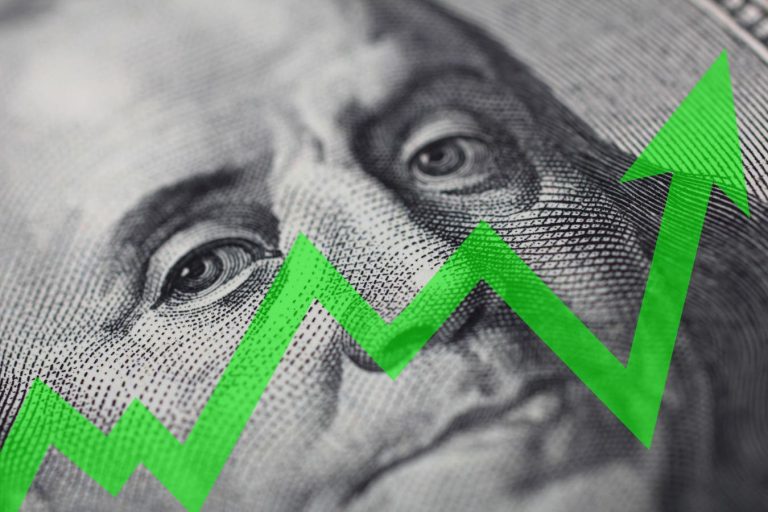Key Takeaways
- Inflation has been high now for many months, but the Fed has managed to bring it down from it’s 9.1% peak in June last year
- The latest CPI figures have come in at 3.7%, which has crept up over the past couple of months
- It’s likely that we’ll continue to see higher inflation in the short term, and more rate hikes could be on the cards given the Fed’s determination to bring it down to around 2%
We’ve all heard so much about inflation over the last couple of years. We’ve seen the headline figures and we’ve felt our own bills going up every month, but what does this all boil down to over the course of the year?
Because yes, it really is getting close to the holiday season, which means 2024 will be here before we know it.
But it’s not quite time to think about how much our turkey and pumpkin pie has gone up in price this year, so let’s cover exactly what’s happened with the cost of living in 2023, how it’s impacted consumers, and what the outlook is for 2024.
What actually is inflation?
Before we dive into the numbers, it’s worth quickly reviewing what we mean when we say ‘cost of living’ or even, ‘inflation.’ We all understand what the terms mean, the rate at which prices are going up for the goods and services that we use every day.
From bread and milk to gas, school fees and airline tickets.
But the reason it’s important to be specific is because there’s more than one way to measure it. Practically speaking, it’s not possible for anyone from the government to measure the increase in the cost of every single good and service for sale in the US.
That would be the only way to get the true, 100% accurate rate of inflation. And gathering the data would probably cost more than the annual military budget.
Which is why different measures of inflation are calculated through using a basket of goods. These are specific items and categories that are chosen to represent a broad cross section of the most common goods and services in the country.
The Consumer Price Index (CPI) is the most well known, and it’s generally what people are referring to when they use the term ‘inflation.’ But the other major measure that’s particularly relevant for the Fed and interest rates is the Producer Price Index (PPI).
This is similar to CPI, but instead of measuring the change in prices for consumer goods, it measures the change in prices at a wholesale level. This can be a good indicator of future inflation at the consumer level.
Inflation through 2023
So what has CPI been doing in 2022 and 2023? Well it’s no secret that inflation was running hot last year. The rate of CPI peaked at an eye-watering 9.1%, which is the highest level seen since the early 80’s.
In order to try to bring inflation back down, the Fed has been drastically raising interest rates. This increases the cost of borrowing, meaning consumers have less money to spend. This lowered spending means less demand for goods and services, which serves to bring down prices.
Over the tail end of 2022 inflation dropped, but was still at 6.5% at the end of the year. The downward trend continued into the early part of 2023, with the annualized rate of CPI getting as low as 3% in June.
That’s very good news, but unfortunately it hasn’t meant the battle has been won.
Since June, CPI has begun to slowly tick back up again. Going up to 3.2% in July and then holding at 3.7% in August and September. That’s not a huge problem, but the fact that it has crept back up has some analysts nervous.
There’s concern that these modest upswings may cause the Fed to hike rates once again, which is causing a huge amount of volatility in the bond markets and making financing incredibly difficult.
Inflation numbers in real terms
To break this down all a little further, it’s important to keep in mind that inflation is a backwards looking measure. When you see that inflation has increased by 4% in the last year, it means that goods today are 4% more expensive than they were a year ago.
It does mean that the cost of living has increased, but it also means that you’ve already experienced the change. Theoretically, there’s nothing to say that high inflation figures today mean high inflation will carry into the future.
Another point worth noting is that inflation very rarely goes negative. That’s known as deflation, and is when prices fall over time rather than rise. That might sound like a good thing, but it happens during times of major economic crisis as widespread job cuts and financial losses cut demand for goods and services.
So while it might sound nice for prices to drop, it’s probably best not to wish for it.
The bottom line
Though inflation remains higher than the Fed would like, it has come down substantially from it’s highs in 2022. The expectation is that the Fed will continue to raise rates as much as they need to in order to bring it back down to their target range of around 2%.
What does that mean for investors and consumers? Well, it means we’re going to be likely to experience more volatility and financial pain. Rising costs are causing household budgets to tighten, and while strike action and pay pressure sees many workers looking to improve their salaries, there’s no guarantee that this will fully offset the amount by which prices have risen.
Of course the kicker is that at the same time as our household bills have increased substantially, the cost of financing has now gone up too. Credit cards, auto loans and mortgages are all significantly more expensive than they were previously, owing to much higher interest rates.
That serves to pile on more pressure on the average household.
It’s not going to be the situation forever. The Fed will likely achieve their objective at some point, but we could be in for a rocky ride in the meantime.
Read the full article here









